Some of my earliest and longest-lasting love affairs in SFF is the subgenre of planetary romance. It seems strangely old-fashion now, but when I first started reading science fiction, these were the books I read, loved and wallowed in. So what is a planetary romance? Contrary to what you might think, it is not actually a blend between romance and science fiction (although it can be that too). If anything, it’s more of a blend between science fiction and fantasy. The idea is that it is a demonstrably science fiction story (containing spaceships and aliens or at least the memory of these things) but the action takes place in one lushly described world. The SF elements might be glancing (Anne McCaffrey usually limited them to a prologue in the Pern books) or they might be a larger part of the narrative, such as a survey crew from another planet exploring a new world. But once you get those SF details out of the way, the books often read more like fantasy, with the medieval or primitive cultures and trappings you see in fantasy worlds – swords, horses, lords and ladies, etc.
The action then usually stays on the planet, where there is a big emphasis on the setting, with vivid descriptions of the landscape and the inhabitants. Like effective historical fiction, the setting is so beautifully realized that you feel like this planet is a place you know. You feel you could walk its streets and smell the scents of the markets and recognize the people you encounter. This planet and the specifics of look and feel and social organization that the author has created must be central to the way the story unfolds. This story couldn’t be told anywhere else. I don’t actually know where the term came from, but the way it gets to the heart of how the planets in these books become as important and beloved to readers as any character in its pages might be how the romance got in there. It’s a subgenre that is sadly out of fashion, but I still love it. Here are some of my favorite planets in SF:
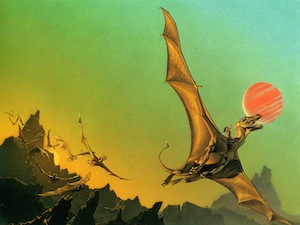
PERN
aka Rukbat III
Created by Anne McCaffrey
Start with: Dragonsong (Harper Hall Trilogy, Book 1)
(my favorite) or Dragonflight (Dragonriders of Pern – Volume 1)
Anne McCaffrey always insisted that her books were science fiction, even before she had given readers much reason to believe her beyond a short prologue in her first books. But gradually, as she filled out the series that grew to over 22 books (depending on how you count, and including later books with and/or by her son Todd), the picture emerges of a world settles by human colonists. McCaffrey flitted all over the timeline of her imaginary world, but some of the volumes (most notably Dragonsdawn) include the story of how colonists discovered the planet, settled there, bio-engineered their surrounding to make it more habitable including adapting the local wildlife into the dragons we know and love. This volume feels the most science fictional. The first books written in the series (and my personal favorites) remind us in a prologue that Pern is a planet colonized by humans, but then settles down firmly into the immersive world of Pern. McCaffrey created a vivid landscape, filled with extraordinary creatures and harrowing dangers. Burning spores fall from the sky in deadly sheets, and only the flying, fire breathing dragons can eliminate the spores, known as Thread, before they hit the ground and destroy anything living in their path. The dragons are an amazing part of her world: telepathically bonded with their riders, beautiful and rare enough that they need to be carefully cared for. But Pern is fascinating beyond the obvious Thread and dragons including the social strata that developed over centuries that ends of resembling a medieval feudal society.
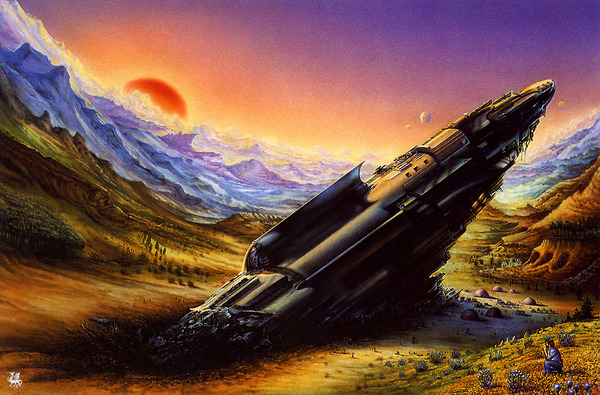
DARKOVER
aka Cottman IV
Created by Marion Zimmer Bradley
Start with: StormQueen!
Darkover was another of my early planetary crushes. Although Marion Zimmer Bradley is a problematic figure for non-literary reasons, if I just remember my first encounters with Darkover, I am thirteen again. Like McCaffrey, she wrote books in various eras of her fictional planet and some of those books read solidly as fantasy, some as SF. Again, like McCaffrey (the two were writing at the same time, both very early trailblazers for women in speculative fiction), the big picture of Darkover is that it was discovered by humans when a colony ship crashes there. The ship is stranded on the planet, unable to contact Earth and the colonists must make the best of things and settle the world. They interbreed with a local telepathic humanoid species, giving the descendants of the colonists sporadically inheritable mental powers. Ages go by and Darkover society develops on its own, mostly in a feudal mode, until the planet is rediscovered by a survey ship, bringing the Darkover inhabitants back in contact with humanity. Some of my favorite books in the series (Stormqueen and Hawkmistress, especially) take place in the ages of separation, and explore the world and powers of Darkover. They read completely like epic fantasy. But the re-contact books like The Forbidden Tower and The Bloody Son were favorites too. The conflict of “primitive” Darkover peoples who nonetheless have special powers versus modern humans is an excellent trope in SF. From an adult perspective, I realize that the quality of the stories in the Darkover books vary wildly in quality and some even contradict their own continuity, but ye gads I loved them as a teen.
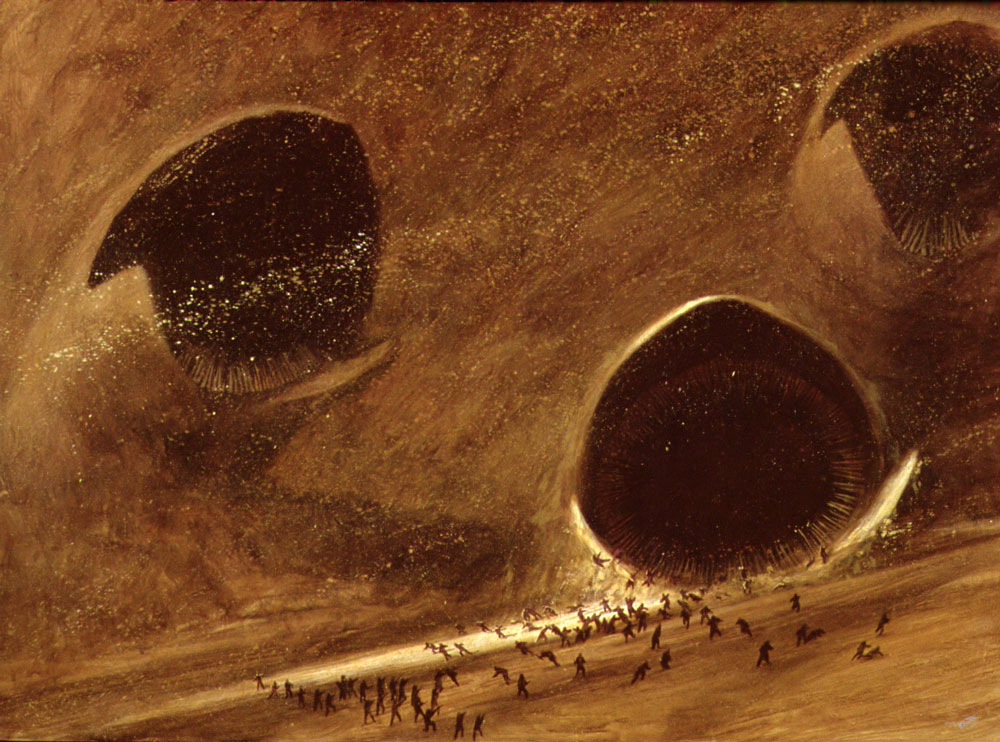
DUNE
aka Arrakis
Created by Frank Herbert
Start with Dune
Dune is a firm classic in the SF canon, but it is also a great example of a planetary romance. The set up is more space opera, with big canvas conflicts of warring interests in a galactic empire fighting over control of the planet Arrakis, otherwise known as Dune. Control of Arrakis means control of Spice (aka melange), a resource found only on that single planet; a resource necessary to support the mental abilities that replace advanced computers in this universe, including the ability to cross interstellar travel. In the Dune universe, the great Houses owe alligence to the Emperor and two of those Houses, House Atreides and House Harkonnen, are at odds. House Atreides has been given the lucrative stewardship over the planet Arrakis, a forbiddingly hostile desert world. The plot of the book involves the young heir to House Atreides, Paul, and his possible destiny as both a powerful product of the Bene Gesserit breeding program and a messiah like leader for the native peoples of Dune. All good space opera fodder, but much of what sticks in my mind about the novel is the descriptions of the planet Dune – its people, the spice, the horrifying sandworms pictured above (which gave me vivid nightmares).
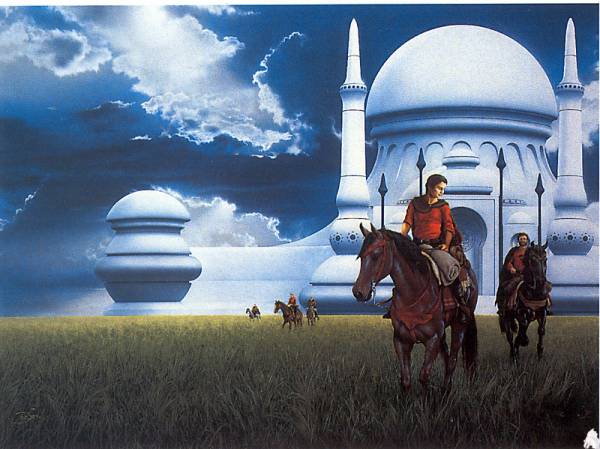
Rhui
aka that planet the Jaran people come from that no one else is supposed to visit
Created by Kate Elliott
Start with: Jaran
While I was never a horse-crazy teen, I do love a fantasy world with a horse culture. The planet at the center of these books is Rhui, and it is interdicted world. Inhabited by a low-technology human culture, visitors are not allowed (think Star Trek Prime Directive). Tess Sorensen is the sister of one of the few people from Earth who opposed the Chapalii, a human-like alien race that have conquered a bunch of planets, including Earth. Tess is rebelling against her role as her brother’s heir and reeling from a bad romance when she takes a ship bound for Rhui, intending to sneak down to the planet. She hides on a shuttle full of Chapalii, who also seem to be sneaking onto the planet. They take off, never noticing her, and she’d be pretty screwed if she wasn’t found by one of the native horsemen. She is taken in by the jaran people, learns their culture while still trying to figure out what the Chapalii are planning. There’s a bit of romance, a bunch of adventure, a brilliant depiction of a culture that seems primitive, and – the best part for me – a really great character arc for Tess, who grows up and grows into her own abilities and potential. She is more than a pawn, and makes her own decisions. Elliott paints a vivid picture of the planet and the nomadic jaran people, seemingly primitive, but having worked out their own interesting gender politics and structures.
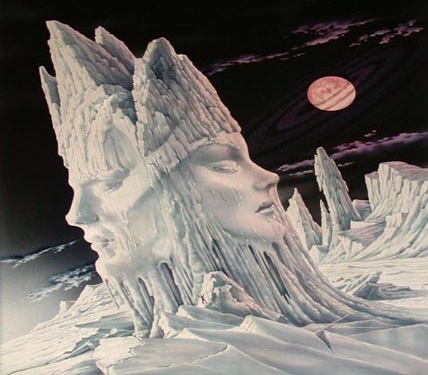
Gethen
aka Winter
Created by Ursula Le Guin
Start with: The Left Hand of Darkness
To be fair, Le Guin’s Hainish cycle books are more social SF, with the earlier Roncannon’s World being much more of a planetary romance. But I was so fascinated by Gethen when I first read The Left Hand of Darkness. I love ice worlds, probably from seeing Empire Strikes Back about 20 times in the theater. Here’s the setup. The world of Hain is oldest of all human worlds. In Le Guin’s loosely connected books set in the same universe (known generally as the Hainish cycle), humanity spread across many planets (including Earth) and are just establishing diplomatic relations once again. The people of Hain bio-engineered a bunch of versions of humans and planted them on various planets. Although Roncannon’s World is the first of her novels set in this universe (her first novel, period), the two books most people turn to are the award-winning Left Hand of Darkness and The Dispossessed. In The Left Hand of Darkness, a Terran envoy named Genly Ai is sent to Gethen to convince the planet to join the Ekumen, an alliance of all the Hain-seeded worlds. Genly is a mindspeaker, like all envoys, but finds that the Gethen’s don’t have that ability. You know what they can do, though? Change their sex during a ritual called kemmer. Interesting quirk, yes, but it also shapes the whole way the society has developed. They’ve never had a war, for instance. Genly is an excellent POV character for the reader, baffled by the world of Gethen and the people and only gradually coming to understand them.
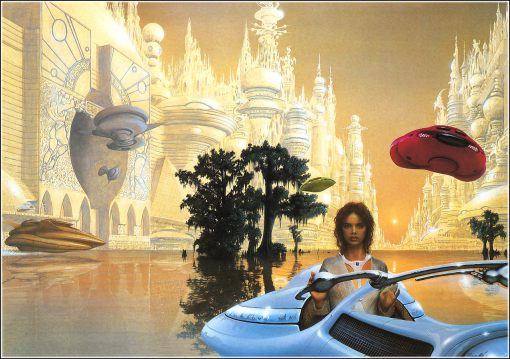
Majpoor
Created by Robert Silverberg
Start with: Lord Valentine’s Castle
Majipoor is home to a wide variety of species, only one of which is humans. It was settled by all these alien races thousands of years ago, and they all live in a delicate detente with the shapeshifting natives, the Piurivar. The planet is a backwater, rarely visited by any starships, which helps keep the books feeling more like fantasy than SF. It’s a mostly agrarian world, with limited advanced technology. In the first book set on Majipoor, Lord Valentine’s Castle, a man s wandering around with no memory in a city which seems to be preparing for the arrival of Lord Valentine. The man decides to join the general revelry and have a good time. He travels the fascinating world of Majipoor until dreams clue him in that he might very well be the ruler Valentine that everyone was waiting for. Fun stuff.
Honorable Mentions for super cool planets:
- Ballybran, as seen in Crystal Singer
by Anne McCaffrey
- Tiamat, as seen in The Snow Queen
by Joan Vinge
- Barrayar, as seen in Barrayar
by Lois McMaster Bujold
- Helliconia, as seen in Helliconia Spring
by Brain Aldiss
- Orthe, as seen in Golden Witchbreed
by Mary Gentle